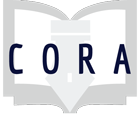Assignment
“According to the CDC…” vs. “Someone just said…”: Identifying Scholarly and Popular Conversations on TikTok
This learning session, led by a librarian, is for first-year community college students in an academic library setting. The intention of this session is to scaffold onto existing research writing skills acquired in previous education, as well as use of popular video sharing platforms to obtain information, like TikTok. Informative videos produced by everyday people are a growing form of intellectual connection between all audiences and scholarly sources based on relatability, as well as visibility of marginalized issues larger news organizations do not address. When the information messenger is familiar yet dynamic in their presentation and provides information that the public is not informed on, viewers are more inclined to listen than if it were just a research paper or a scholarly representative of a research community. There are, however, citation issues and basic research principles missing in several of these videos, based solely on most video sharing platform’s intention to obtain engagement, not to responsibly inform/educate its users. As researchers, it is crucial to discern engagement-intended, incendiary content with informative, well-researched content that our neighbors are making, even if their intentions are good.
| Attachment | Size |
|---|---|
| 304.28 KB |
By the end of this session, students will be able to:
- Identify research as an ongoing conversation between several scaffolding and outside research and popular community voices.
- Recognize the importance and necessity of crediting other voices inside and outside of the research and popular communities you are entering.
- Respect your own contributions to scholarship by following citation guidelines in your own information creation.
Information Literacy concepts:
Individual or Group:
- This session includes both passive and active activities. The librarian begins the session by priming students in standard lecture format with what scholarly conversation is, what it looks like, and how to participate in it responsibly and respectfully. The students then engage in verbal and written group analysis of a TikTok and determine if it is a scholarly or popular information source. The students produce their learning onto the worksheet, which the librarian will collect at the end of the session to assess learning.
- The librarian builds on prior knowledge of students’ engagement with TikTok (as viewers and creators) or other video sharing platforms of the same format, as well as student learning of proper citation use from previous education, no matter how long ago.
- Popular conversation should not be taught as “lesser” than scholarly conversation, but as diversified intellectual support to scholarly conversation when used properly. The crucial factor in discerning the two is that the information provided is factually correct, well-researched, and most importantly, addresses other voices in the ongoing conversation that the creator is entering instead of operating within a vacuum.


Comments
I had a lot of fun creating